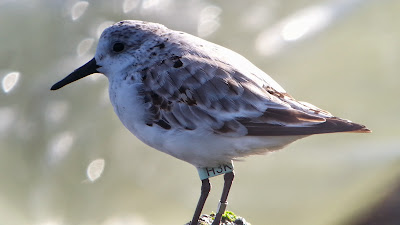Its now getting towards the business end of the year when it comes to undertaking a yearlist. There are not many species on offer and every opportunity needs to be taken.
Had a bit of a lucky week with little auk and Richards pipit added so I though I would keep the momentum going and spend the day on the reserve. There are still a few seabirds I haven't seen yet, although its getting a bit late for most, so I decided to spend the morning staring at the sea.
Before I settled down I had a lovely confiding flock of 11 snow buntings (saw a further 3 during the day) feeding along the tideline.
The sea was pretty quiet actually. There was a small passage of duck but not a great deal else. A bonxie battering a GBB gull and a woodcock in/off were the highlights. A walk down to the Brancaster creek was successful with a flyover twite added to the yearlist.
Spent the afternoon in Parrinder Hide going through the ducks and golden plover but couldn't find anything out of the ordinary. The white headed golden plover was within the flock, returning for its 4th winter at least. The water pipit was still about but always distant at the back of the lagoon.
A nice ringtail hen harrier appeared south of the reserve circling over Choseley drying barns before drifting west and was probably the same bird hunting over Thornham Point later.
A fairly quiet but ultimately successful day. The addition of twite takes my yearlist to 188. Not going to break my 214 but 200 may be possible.
Pics 1-4 snow buntings
Pic 5 white headed golden plover on the fresh marsh



















































